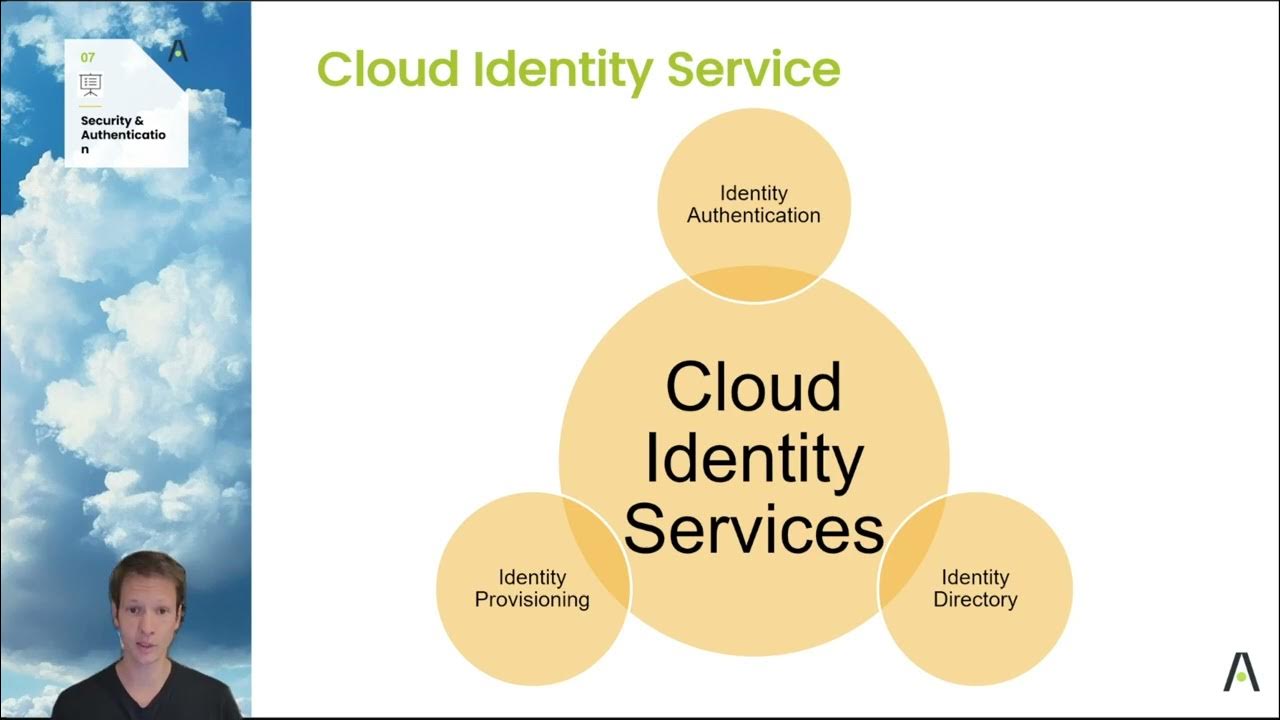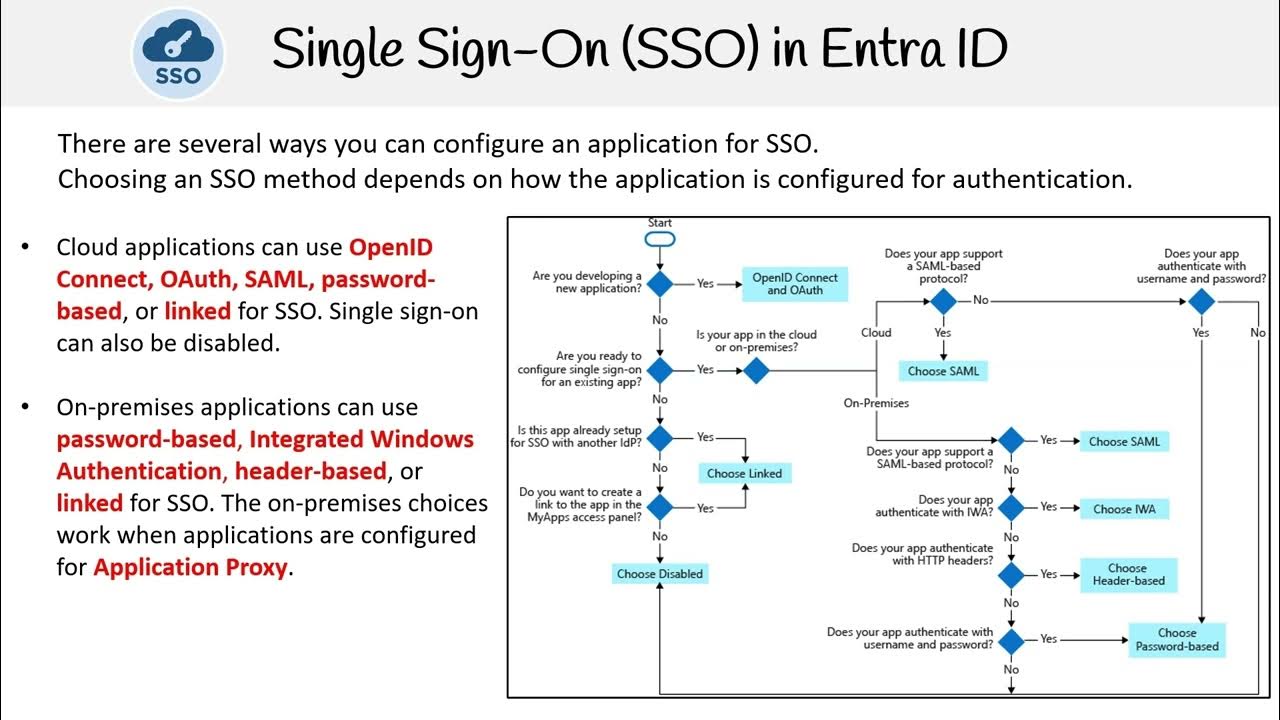20 Identidade, acesso e segurança - Parte 1
Summary
TLDRThis video focuses on critical topics related to identity, access, and security within the Azure cloud environment, covering directory services, authentication methods, and security models. It highlights tools like Microsoft Entra ID and Entra Domain Services, along with authentication strategies such as single sign-on and multi-factor authentication. The importance of zero-trust security models and defense-in-depth strategies is emphasized to prevent security breaches. The course also explores Microsoft Defender for Cloud, a hybrid and multi-cloud platform, helping users manage and secure their environments. It's a comprehensive overview for those preparing for the Z900 certification, designed to offer practical insights into cloud security.
Takeaways
- 😀 Security is our responsibility; providers give us tools, but we must implement security ourselves.
- 😀 The lesson focuses on directory services, authentication methods, security models, and Azure AD services.
- 😀 You'll learn about Microsoft Entra ID, formerly known as Azure AD, and how it integrates with identity and access management.
- 😀 Key authentication methods covered include Single Sign-On (SSO) and Multi-Factor Authentication (MFA).
- 😀 External identities and guest access management in Azure AD are crucial for enabling secure collaboration.
- 😀 Conditional access in Azure AD helps control who and what can access your resources based on specific conditions.
- 😀 RBAC (Role-Based Access Control) is essential for managing permissions in Azure, controlling user and resource access.
- 😀 Zero Trust is a core security model—never trust, always verify—reducing risks of lateral attacks and data leaks.
- 😀 Defense in Depth, or the 'onion model,' ensures layered security across multiple environments like network, authentication, and application.
- 😀 Microsoft Defender for Cloud is a cloud-native platform that offers visibility and security across hybrid and multi-cloud environments.
- 😀 The Z900 certification exam focuses on direct, practical questions, emphasizing tool usage over theoretical concepts.
Q & A
What is the focus of this module in the video script?
-The module focuses on identity access and security, particularly within the context of Azure, exploring directory services, authentication methods, and security models.
What are some of the main topics discussed in the module?
-The main topics include directory services like Microsoft Entra ID, authentication methods such as Single Sign-On (SSO) and Multi-Factor Authentication (MFA), external identities and guest access, conditional access, Role-Based Access Control (RBAC), Zero Trust security, defense in depth strategy, and Microsoft Defender for Cloud.
What is the responsibility of a user when it comes to security in Azure?
-While Microsoft provides tools to implement security, the responsibility for its implementation lies with the user. This means users must actively manage and configure security within their environments.
What is the Zero Trust security model, and how does it work?
-The Zero Trust model operates on the principle of 'trust no one, verify everyone.' It ensures that all access is constantly validated and users are granted only the least privilege required, even if they are inside the network.
What is the significance of Role-Based Access Control (RBAC) in Azure?
-RBAC is important because it helps manage permissions in Azure by defining roles and assigning users to those roles, ensuring that individuals only have access to the resources they need.
How does security in the cloud differ from on-premise environments?
-In the cloud, security management has more granular control, such as limited access to specific resources. Permissions can be defined for both users and resource movements, whereas in on-premise environments, users often have broader access once they are authenticated.
What is the concept of 'defense in depth' as mentioned in the script?
-'Defense in depth' refers to applying multiple layers of security, such as network security, authentication, and application security, to protect an environment. It is like an onion with multiple protective layers to prevent unauthorized access.
What is Microsoft Defender for Cloud, and why is it important?
-Microsoft Defender for Cloud is a cloud-native security tool that provides visibility and security management across both Azure and multi-cloud environments. It helps users monitor and protect their resources, including environments outside of Microsoft Azure.
How does the Z900 certification exam test knowledge?
-The Z900 certification exam is designed to be direct and practical, focusing on asking candidates which tools or solutions they would use in specific scenarios related to Azure, security, and identity management.
What does the course aim to provide beyond basic security concepts?
-The course aims to give a broad overview of essential concepts in Azure security and identity management, preparing learners not just for the certification exam but also for deeper exploration in related areas like DevOps and hybrid cloud environments.
Outlines

This section is available to paid users only. Please upgrade to access this part.
Upgrade NowMindmap

This section is available to paid users only. Please upgrade to access this part.
Upgrade NowKeywords

This section is available to paid users only. Please upgrade to access this part.
Upgrade NowHighlights

This section is available to paid users only. Please upgrade to access this part.
Upgrade NowTranscripts

This section is available to paid users only. Please upgrade to access this part.
Upgrade NowBrowse More Related Video

How to configure and enforce multi-factor authentication in your tenant

Episode 29: Cloud Identity Services Introduction

1 Apresentação do Modulo

AZ 305 — Single Sign On SSO

Lec-8: Protection & Security in Operating system | Full OS playlist

AWS Cloud Practitioner Exam Questions | CLF - C02 | Tutorial - 08 | Tech India |
5.0 / 5 (0 votes)